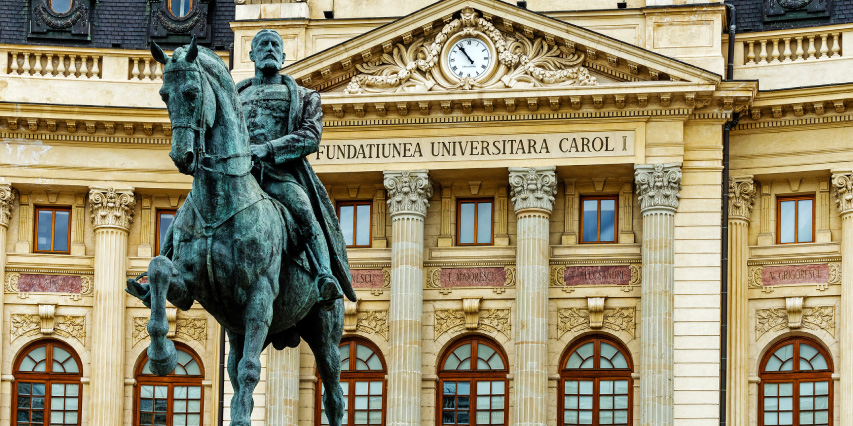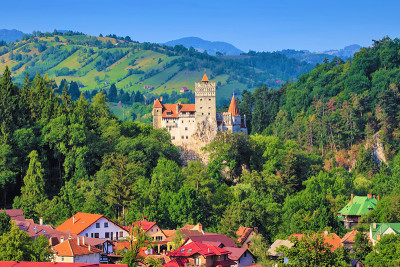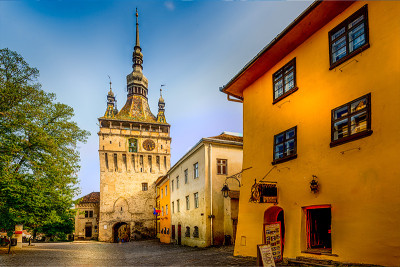King Carol I, born Karl Eitel Friedrich Zephyrinus Ludwig, Prince Karl of Hohenzollern-Sigmaringen, ruled in Romania from 1866 to 1914. He was born in 1839 and he first ruled as Prince, then King. He ruled until his death in 1914. The dynasty that he was a part of (the Hohenzollern-Sigmaringen dynasty) ruled Romania until the country became a republic in 1947.
King Carol I was born in Sigmaringen, Prussia, which is present-day Germany. He was born on April 20, 1839 to Catholic parents. Upon completion of elementary studies, he entered the Cadet School in Münster.
After that, when he was 18 years old, he went to Berlin to study at the Artillery School. He then became a Prussian officer and fought in the Second Schleswig War. He participated in the assault of Fredericia citadel and Dybbøl. These experiences would later serve him well as he embarked on the Russo-Turkish War.
Carol I was thin and of average stature, but was said to have been an amazing soldier. He was healthy and very disciplined. More than being an exceptional soldier, Carol I was a well-rounded person. He spoke several European languages and he was a very good politician. He was a people person and he had liberal ideas.
He also had good relations with other rulers of Europe. His family was related to the Bonaparte family – one of his grandmothers was a Beauharnais, and the other was a Murat. All of these details would help him to later become ruler of Romania.
Downfall And Exile Of Alexandru Ioan Cuza
Before Carol I became King, Alexandru Ioan Cuza (anglicized as Alexander John Cuza) was Domnitor (Ruler) of the Romanian Principalities. Cuza did many great things for Romania, namely uniting the principalities. He was originally King of Wallachia and King of Moldavia, but he was able to proclaim unification.
What had happened was he was elected as both King of Wallachia and King of Moldavia at the same time, during the same election cycle, so he decided that the two lands would be unified. Other European countries accepted Romania as one, and so it was official.
Cuza also introduced agrarian reform with the eradication of serfdom. This, however, turned out to be his downfall. Landowners, the wealthy, and conservatives did not like these reforms and decided to oust Cuza in 1866. Tensions had also been growing because of a scandal due to his relations with a mistress: Maria Catargiu-Obrenovic. With his ousting, the people invited in their new king: King Carol I.
King Carol I’s Reign
When King Carol I arrived in Romania, the country was in political turmoil. Cuza had united Wallachia and Moldavia, but other European powers did not want to accept King Carol I as King of both. Another problem was that, even though Romania’s political leaders had chosen King Carol I as their new King, Carol I was not their first choice. Actually, some of the prominent leaders originally approached Philip of Flanders, who was the brother of King Leopold II of Belgium.
Philip knew the French would not view it favorably for him to reign over Romania. Not only that, but just a few years earlier, Philip had turned down the throne of Greece. He decided to turn down this opportunity too. That is when Napoleon III suggested Carol I, Philip’s brother-in-law. The French at the time had strong influence over Romania, and so the Romanian politicians gave in to this suggestion and brought in Carol I as King.
Carol was elected King on April 20, 1866 and was crowned on May 10th of that year. When he was crowned, he addressed the crowd in French, because he had not learned Romanian yet. Still, he was accepting of Romanian culture and had is name Romanianized, spelling it as Carol rather than his birth name Karl. Luckily, Romanian is another Romance language and Carol was quickly able to pick up the new tongue.
Two months after King Carol I arrived in Romania, in June of 1866, the Romanian Parliament adopted the 1866 Constitution of Romania. It was modeled after the Constitution of Belgium, which was signed in 1831. Romania’s constitution guaranteed private property, freedom of speech, freedom of the press, abolished the death penalty during peace time, and created a separation of powers of the government.
Even though the constitution was in many ways very liberal, it also banned non-Christians from becoming citizens, which mostly negatively affected the Jewish community. The Constitution also made King Carol I’s male descendants heirs of the throne, and required that his descendants be raised as Eastern Orthodox Christians.
The War Of Independence (1877-1878)
Anti-Ottoman revolts occurred in several Balkan countries from 1875-1877. Up until this time, the Principality of Romania was formally under Turkish rule. However, on May 10, 1877, Parliament voted, and Romania declared itself independent.
The Treaty of Berlin was signed after the war, on July 13, 1878. The treaty officially declared Romania independent. Thus, the Kingdom of Romania was born. Up until this point, King Carol I was technically just a prince. Indeed, he was declared a prince even in the Constitution of 1866. Once the treaty was signed, he became a King. The Constitution was then amended to reflect this change and Carol’s new title.
King Carol I’s Death
After ruling over Romania for a long 48 years, King Carol I’s time came to an end. He died in 1914, likely due to the stress of World War I. He had married Princess Elizabeth of Wied in 1869, but the couple had only had one daughter, Princess Maria, who died at a mere four years old.
Succession was of great concern to the Romanian government, and it was supposed to be King Carol I’s bloodline that continued as rulers of Romania. King Carol I’s older brother, Leopold, had declined the throne of Romania. Leopold’s oldest son, William, had also declined the throne. Finally, Leopold’s second son, Ferdinand, was named Prince of Romania in 1914.

 ES
ES
 IT
IT
 DE
DE
 FR
FR


